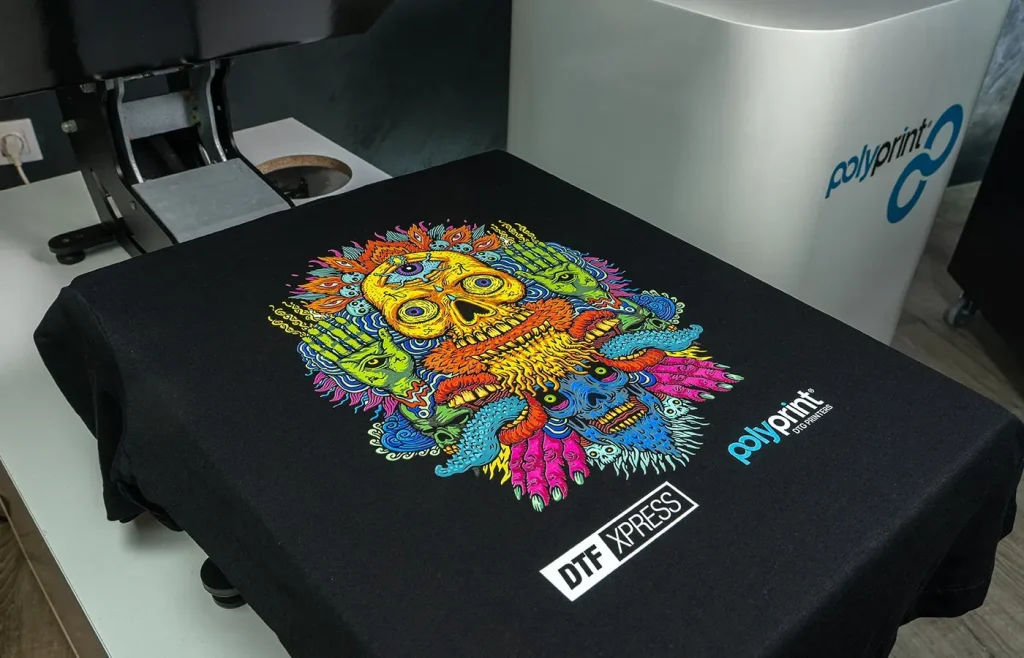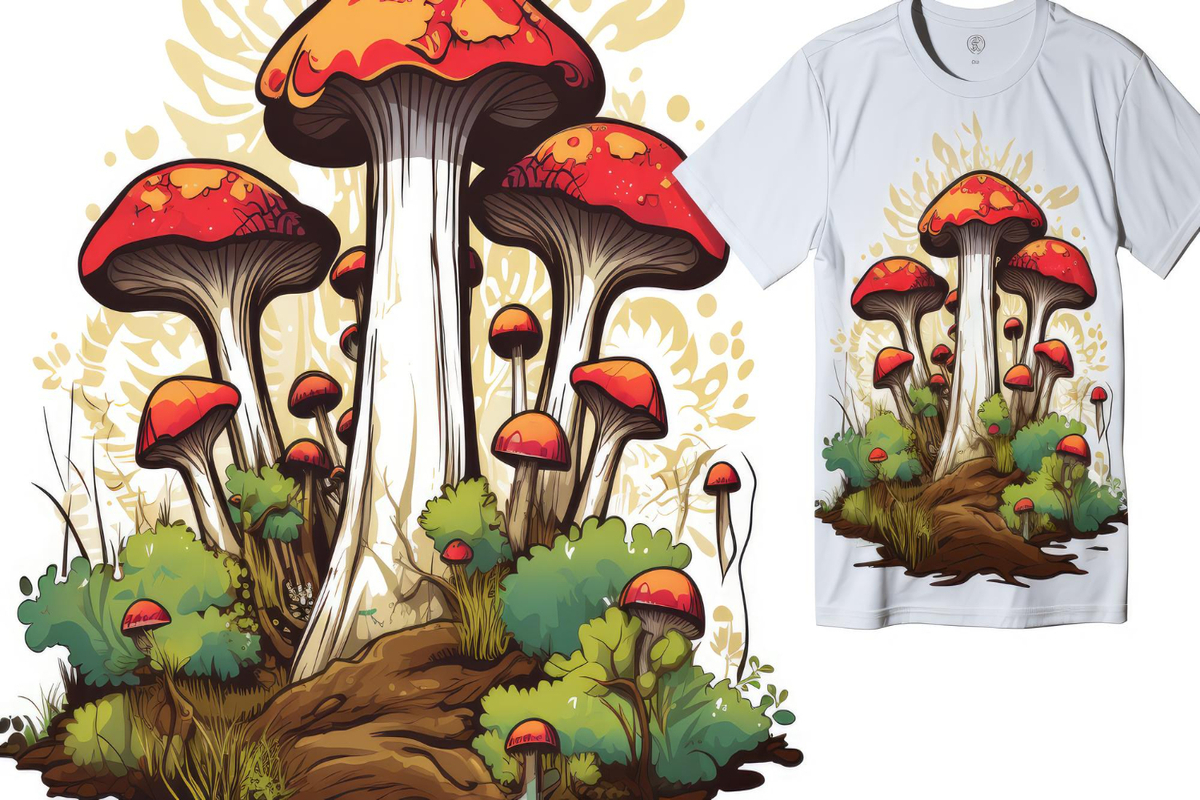DTF printing, or Direct to Film printing, is revolutionizing the way designs are transferred onto fabrics, providing a seamless blend of quality and versatility. This innovative technique allows for vibrant and durable prints on a variety of materials, making it a top choice for custom apparel. As businesses and individuals seek personalized solutions, the advantages of DTF become increasingly clear, including lower setup costs and the ability to easily produce small runs. Furthermore, emerging trends in sustainable DTF practices highlight the industry’s commitment to eco-friendly processes, setting a new standard for printing sustainability. With the ongoing advancements in DTF technology, this printing method is poised to dominate the market and cater to the ever-evolving needs of consumers.
Also known as Direct to Film technology, DTF printing stands out for its exceptional ability to produce detailed and colorful fabric transfers. Utilizing advanced digital printing techniques, this method has quickly gained traction in the world of custom printing, attracting attention for its adaptability across different fabric types. With the rise of custom DTF printing, enthusiasts and businesses alike are tapping into this modern solution, which balances high-quality output with cost-effective production methods. As sustainability becomes a significant concern in the printing industry, many are exploring the benefits of sustainable DTF processes that minimize environmental impact. By understanding these alternative terms and their implications, businesses can effectively leverage DTF printing to meet contemporary market demands.
Understanding Direct to Film (DTF) Printing
Direct to Film (DTF) printing represents a revolutionary step in the evolution of textile printing technology. Unlike traditional methods that often rely on screens and inks that can be restrictive in terms of material compatibility, DTF printing utilizes a digital printing process that allows for more intricate designs and vibrant colors. The technique involves printing digital designs onto a special film that can then be easily transferred to various fabric types, including cotton, polyester, and blends, showcasing its versatility. Additionally, because the prints can be produced digitally, changes can be made on the fly, making it an ideal option for custom DTF printing applications.
The DTF process begins with high-resolution designs being printed onto a coated film with special inks. A heat transfer process then adheres the design to the fabric, ensuring sharpness and brightness in the final product. This method yields results that rival sublimation printing while surpassing it in terms of fabric choice and the feasibility of small-run orders. Therefore, businesses looking for flexibility and quality in their product offerings will find DTF printing a compelling choice.
Benefits of DTF Printing in the Textile Industry
One of the primary advantages of DTF printing lies in its adaptability to various types of fabrics, thus breaking down barriers often associated with other printing methods. With DTF, whether it’s a cotton t-shirt or a polyester running jacket, the process effortlessly delivers high-quality results. Moreover, DTF printing is designed to produce vibrant colors that are not significantly affected by wash cycles, ensuring longevity and customer satisfaction. This means brands can confidently offer products with dynamic designs that maintain their integrity after multiple washes.
Furthermore, setup costs with DTF printing tend to be lower compared to traditional modes such as screen printing, where costly screens must be produced for each design. This makes DTF especially appealing for niche markets and custom projects where order volume can vary widely. As businesses increasingly adopt just-in-time production techniques, the cost-effectiveness of DTF printing allows for more dynamic responses to consumer demands without sacrificing quality or increasing turnaround times.
The Growth of DTF Printing Trends
The expansion of DTF printing within the textile industry is closely aligned with a number of emerging trends that underscore its relevance. The rise in demand for personalized and custom products has led to an increased acceptance of DTF, as businesses are now able to cater to individual consumer preferences more effectively. With the growing trend of consumer personalization, DTF printing stands out as a favored choice for custom apparel since it allows for detailed designs in small batches, perfectly addressing modern consumer needs.
Moreover, as technology evolves, the capabilities within DTF printing continue to advance, reflecting broader trends in digital printing. Innovations such as faster print speeds and enhanced color fidelity are pushing the envelope, enabling designers to dream bigger. As businesses embrace these new capabilities, the DTF printing market is expected to see substantial growth, reflecting not only in increased market share but also in the creation of new, exciting products that were previously deemed challenging or impossible to produce.
Sustainability and DTF Printing Practices
Sustainability has emerged as a primary focus across all industries, and the DTF printing sector is no exception. With the increasing awareness of environmental impacts associated with traditional printing methodologies, many DTF manufacturers are stepping forward with eco-friendly ink options and processes designed to minimize waste. By using water-based inks and reducing energy consumption during the printing process, DTF printing can align more closely with sustainable business practices, appealing to environmentally-conscious consumers.
Furthermore, as sustainability trends permeate the fabric of consumer behavior, DTF printing offers the perfect vehicle for brands to showcase their commitment to responsible production. With collaborative efforts across industries, the DTF sector is uniquely positioned to not only thrive but also lead the charge towards greener printing methods, promoting products that are as kind to the planet as they are stylish and durable.
Custom DTF Printing: Tailoring Solutions for Every Need
Custom DTF printing has emerged as an essential component for businesses seeking to establish a unique identity in a crowded marketplace. This capability allows for the creation of limited edition apparel, promotional items, and personalized gifts that resonate with consumers looking for something special. The ability to incorporate custom artwork, logos, or personalized messages into fabric products aligns perfectly with the growing trend of individualized merchandise.
With DTF printing, the entire customization process is streamlined. Designers can work with clients to create tailored graphics that speak directly to their target audience, thereby enhancing overall customer engagement. The integration of DTF printing into custom work not only boosts creativity but also provides a cost-effective means for businesses to differentiate themselves in their respective markets, all while maintaining high quality and efficiency.
Future Prospects of DTF Printing
Looking ahead, the future of DTF printing appears bright, mainly driven by technological advancements and the growing customization market. As more companies shift towards digital solutions, the demand for DTF printing is expected to skyrocket, benefiting established players and newcomers alike. Innovations in printer technology, software improvements, and advancements in ink formulations will likely enhance the printing experience, making DTF an even more desirable option for a variety of applications.
Moreover, as fashion trends continue to lean towards personalization and eco-consciousness, DTF printing is strategically positioned to address these consumer desires. Businesses that embrace DTF technology with an eye towards sustainability will likely establish a strong foothold in the market, capitalizing on the synergistic benefits of quality printing and environmentally friendly practices. The trajectory of DTF printing suggests an increasing prevalence in both retail and promotional spaces, heralding a new era in flexible printing solutions for diverse applications.
Frequently Asked Questions
What is DTF printing and how does it work?
DTF printing, or Direct to Film printing, is a modern technique that utilizes digital technology to create high-quality transfers printed on a special film. This film is subsequently heat-pressed onto various textiles, allowing for vibrant colors and sharp details, making it suitable for cotton, polyester, and more.
What are the advantages of DTF printing compared to traditional methods?
The advantages of DTF printing include its versatility across multiple fabric types, excellent print quality that resists fading, and lower setup costs compared to traditional screen printing. These features make DTF an ideal choice for custom orders and small production runs.
What are the current trends in DTF printing that businesses should be aware of?
Current DTF printing trends include technological advancements like dual-head printers for better speed and quality, a growing emphasis on sustainability with eco-friendly inks, and an increasing market demand for customized DTF products, particularly in the apparel sector.
How is DTF printing contributing to sustainable practices in the textile industry?
DTF printing is promoting sustainability by introducing eco-friendly inks and reducing waste through efficient printing processes. This shift towards responsible production aligns with the industry’s growing commitment to minimizing environmental impact.
What applications are best suited for DTF printing in custom merchandise?
DTF printing excels in creating customized merchandise such as personalized gifts, unique fashion items, and sports uniforms. Its ability to produce intricate designs makes it a popular choice for businesses looking to meet consumer demands for individuality in their products.
How can businesses integrate DTF printing into their existing workflows?
Businesses can integrate DTF printing into their workflows by combining it with other techniques like embroidery, enhancing their product offerings. This integration allows them to provide comprehensive decoration services, catering to diverse customer needs in a competitive marketplace.
| Key Point | Details |
|---|---|
| What is DTF Printing? | A digital printing technique that transfers designs onto a special film, applied to textiles with a heat press. |
| Advantages of DTF Printing | 1. Versatility: Works on various fabric types. 2. High Quality: Vibrant and long-lasting prints. 3. Lower Setup Costs: Cost efficient for custom orders. |
| Latest Trends and Developments | 1. Technology Advancements: Dual-head printers and smart ink formulations. 2. Sustainability Focus: Eco-friendly inks and processes. 3. Market Growth: Increasing adoption in the custom apparel industry. |
| Practical Applications | 1. Customization: Personalized merchandise like gifts and uniforms. 2. Workflow Integration: Combining DTF with other decoration methods. |
Summary
DTF printing is revolutionizing the way we think about textile printing. By providing businesses with innovative and versatile solutions, DTF printing not only ensures high-quality outputs on diverse fabrics but also supports customization trends that are increasingly relevant in today’s market. The eco-friendly advancements and technological improvements in DTF printing further enhance its position as a frontrunner in the printing industry. As this method continues to grow, it is clear that DTF printing will play a pivotal role in shaping the future of custom apparel and merchandise.



